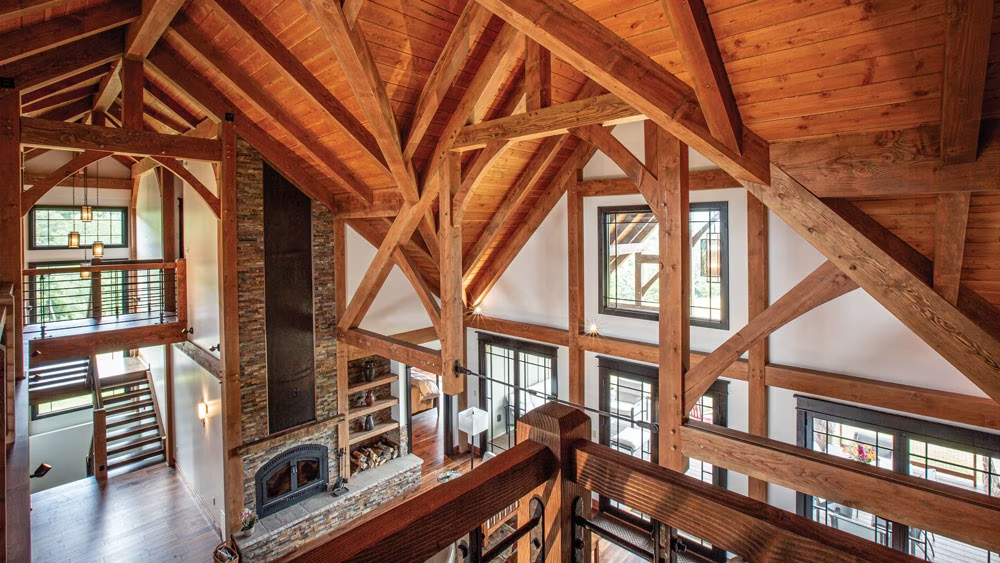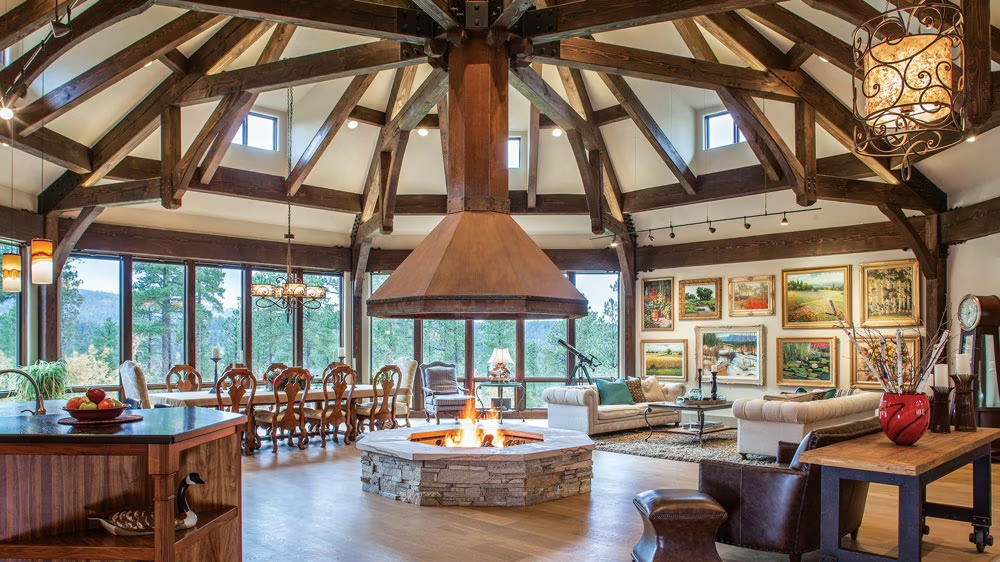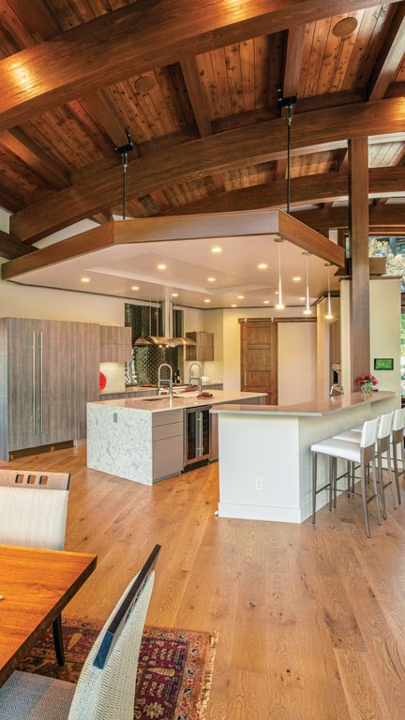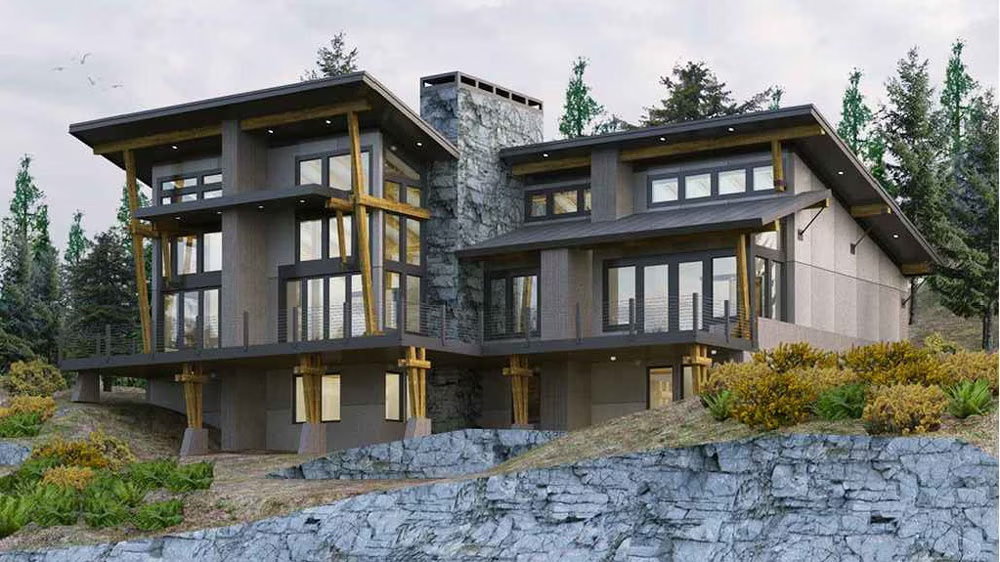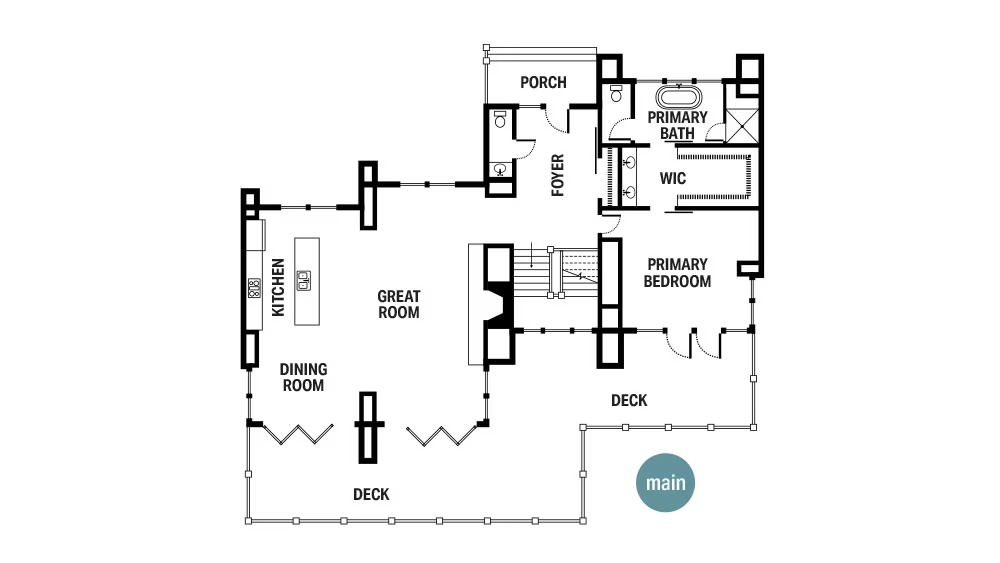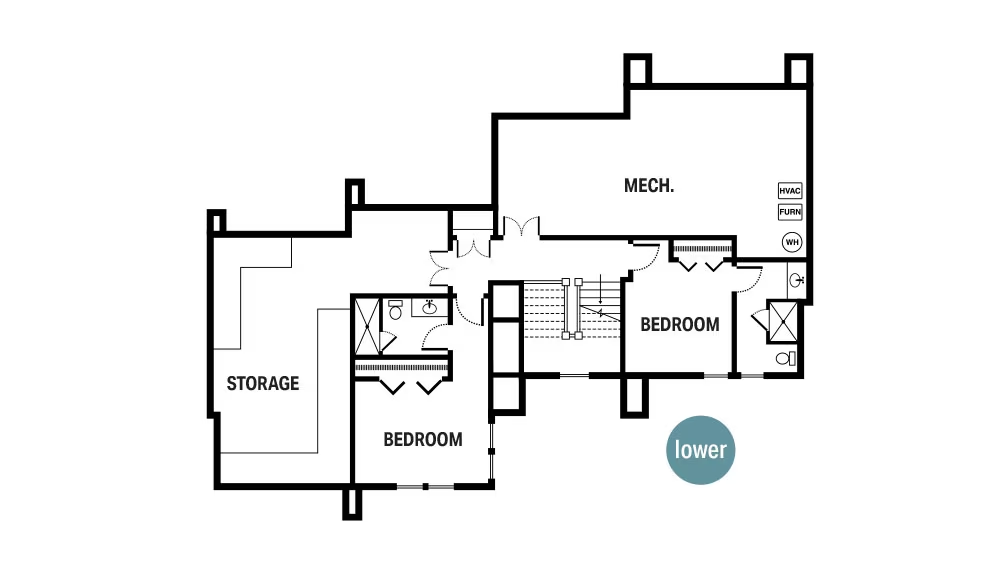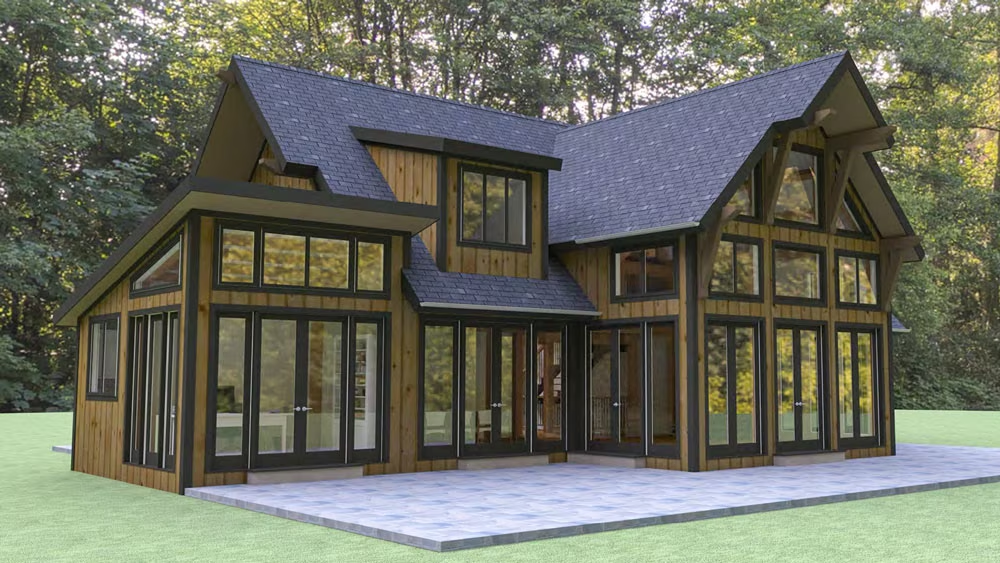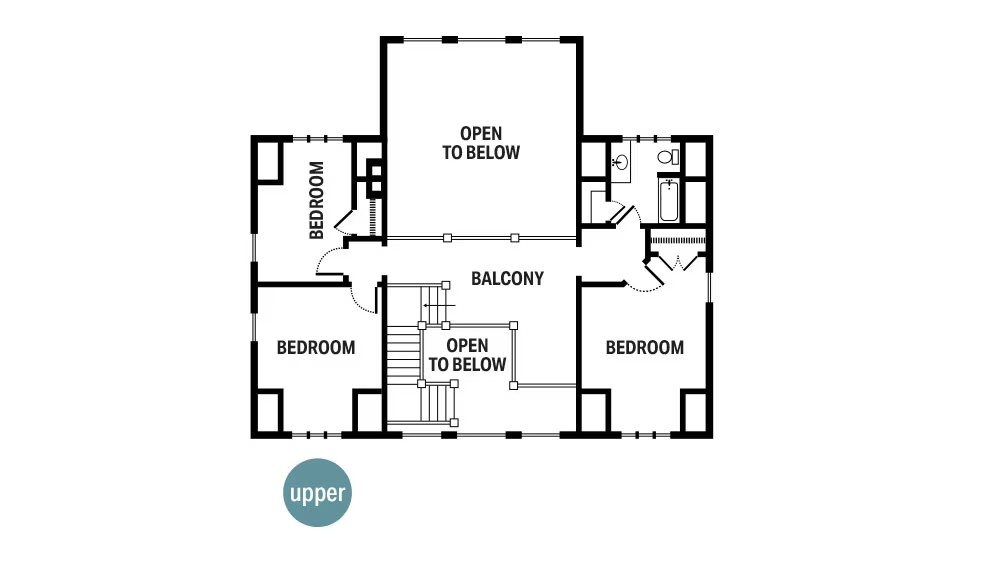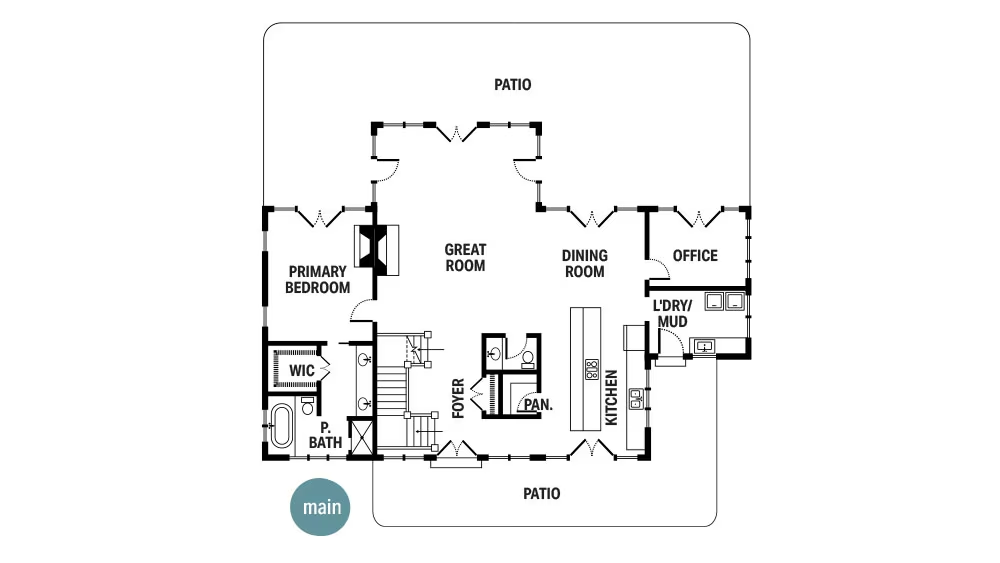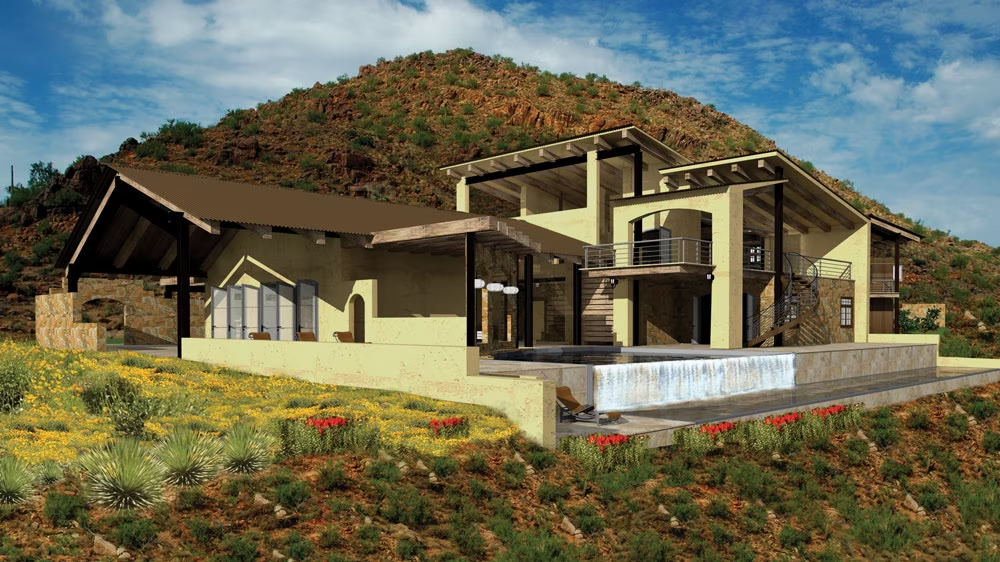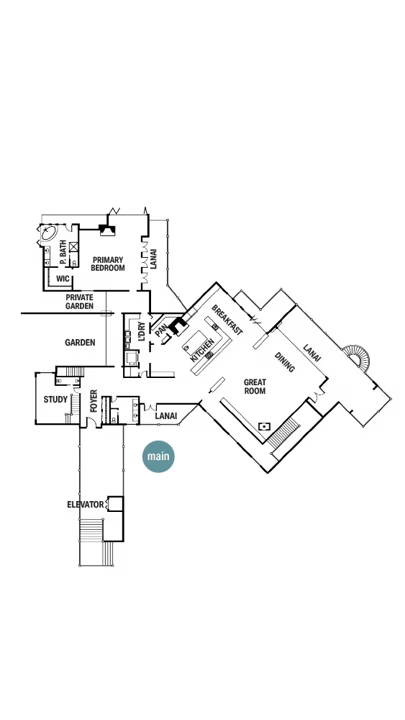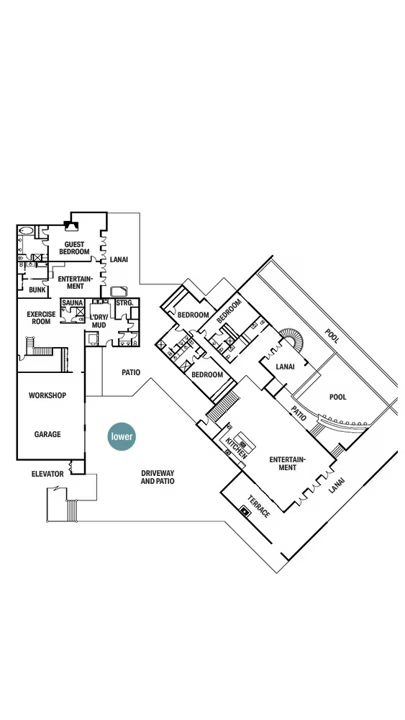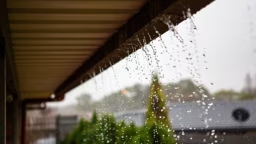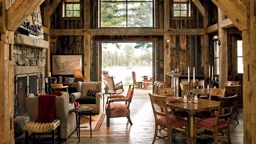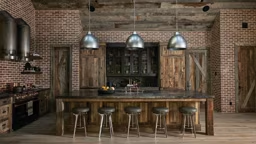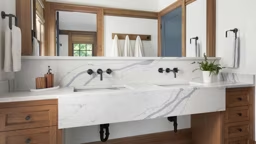Before we can talk about the burgeoning new architectural style of the Mountain West, or even California’s crisp-but-casual influence on it – we must first take a trip across the globe to Barcelona, Spain. There, says Woodhouse,The Timber Frame Company architect Diana Allen, is an iconic example of the power of clean lines and modern design: the Barcelona Pavilion by Mies van der Rohe.
A fusion of glass and sleek slabs of stone, it can feel geographically and aesthetically distant from the rustic, slope-side homes of the U.S. Mountain West, where log and timber structures are mosaics of local stone, wood and patinated metals.
But it is, in fact, the iconic designs like the Barcelona Pavilion, whose modern strokes informed the cool and contemporary lines found across the West Coast and now, increasingly, scattered across the Rocky Mountains as homeowners are uprooting their primary residences, heading for the hills and asking for modern looks in mountain locales.
So says Diana: “For me, when I think about any plan where we’re looking for modern, I always try to think about those ideas. ‘Can I get some clean lines? Can I get a lot of glass in there? Can I get some simple forms?’ And if I’m in the mountains, and I want this spectacular, modern space, now I’m going to start to think, ‘Can I employ multiple tiers? Can I use a lower level? Is there a slope? How can I make the house feel like it’s grown from that land?’”
All these questions Diana poses are crucial elements of the increasing popular design style that’s come to be known as “mountain modern.” Here, we dig into the details that define it.
Clean Lines
If the very first thing to catch your eye about this style is the pleasingly clean lines, you’re not alone. One of the main tenets of mountain-modern design is a focus on striking, distinct lines, mono-slope roofs, large overhangs and an architectural shape that makes a statement.
“It really is a bold style, as far as the architectural shape of the house,” proclaims Ethan Beiler, account executive for Mid-Atlantic Timberframes’ Mountain States Division. “It’s very unique and multifaceted, with a lot of big faces of the building; they might have huge glass windows and then be topped with a mono-slope roof and a large overhang that juts out and makes a statement.”
Open Layout
Take a step inside, and you’ll notice these homes — like many log, timber and hybrid designs — lean heavily on the beloved open-concept floor plan … and for good reason. Log and timber-framed structures lend themselves naturally to free-flowing, flexible interior spaces. And in the mountains, a sprawling great room with room to gather around the hearth is a must. Diana points out that this is also a smart way to boost the spaciousness of a small footprint.
“I think one of the biggest things for me is, I’m always trying to simplify the timber frame,” she explains. “Can I get the frame as simple and pure as possible without a lot of braces or a lot of posts that are in the way? … By doing so, I’m trying to get a small footprint to feel larger, without being too voluminous or too large, right? And certainly, with an open floor plan, a small footprint can feel so much larger.”
Material Magic
Inside and out, materials cement the sense of place. Jeffery Caudill, the owner and president of Winterwoods Homes, attributes the inspiration for the company’s “Mountain West” collection to iconic western designs that drew heavily on local materials.
“The collection was inspired by Frank Lloyd Wright’s winter home, Taliesin West, in the Arizona desert,” he explains. “In the collection, materials play a lead role.” Think: native stone masonry, naturally made adobe stucco materials from the surrounding grounds, local timber teamed with steel girders, torched metal decorative siding, indigenous tile work and neutral color palettes inside and out.
While local materials will always be timeless, Ethan notes there is one look in particular that he’s noticed of late:
“Darker metals are definitely a trend that I’m seeing,” he says. “That really plays into how timber frame homes are so versatile. You know, when combining timber with other materials, you can get any look that you’re going for. That’s why timber framing works so well with both the traditional rustic aesthetic as well as this new, mountain-modern look.”
Inside-Out
Finally, it only makes sense that a priority in mountain-modern homes is a connection with the places that drive the design. In these homes, the choice of materials (stone, wood) and floor plan features (great walls of windows, abundant outdoor entertaining space) unite to bring a closer connection to the great outdoors.
“There’s a big focus on mental wellness and how your home can foster that goal,” says Ethan. “And the idea of ‘biophilia,’ just bringing the outdoor elements in, is a comfort to people. Timber framing does that by bringing the wood in. It offers a warm feeling and it balances out some of the industrial materials or looks that modern architecture brings.”
Ethan points out that the wood isn’t just beautiful or strong; it’s also an efficient building method. “From a construction standpoint, having a structural material that is also a visual asset and quickens the speed of installation of the entire home is really an advantage, particularly when you can only build between spring and fall with the snowfall in mountain areas.”
Up in the Clouds
Bringing some of those clean lines and striking angles from the exterior facade to the design of the interior features in the form of floating staircases, fireplaces and ceilings can maximize sightlines and make a statement. Here are three examples of ways to use an airy aesthetic to really make the interiors of your sky-high home stand out:
Floating Stairs
Unencumbered, floating staircases pose another place for framing up picturesque views and flexing some architectural flair. “Floating staircases really add to that open concept,” says Ethan Beiler, account executive for Mid-Atlantic Timberframes’ Mountain States division. “Timber framing works beautifully to incorporate wood into the design but doesn’t detract from keeping the space open.”
Floating Fireplaces
Ethan reports he’s being seeing a lot of floating chimneys, which allow a fireplace to take center stage without breaking up the flow of the floor plan. “If you have a fireplace in the center of a large room, you’d typically have to break up the room for that,” he says. “Now, people are hanging the chimney from above, and the fire is down below. You can actually see through the entire fireplace to the other side of the room.”
Floating Ceilings
A floating ceiling in places like the kitchen not only add visual interest, but also bring functional lighting a little closer, particularly in homes with soaring ceiling heights. In this Woodhouse home in Steamboat Springs, Colorado, the floating ceiling also helps to define the space and dial up the intimate ambiance.
Ready to see all these elements in action? Check out these three plans that prove modern design is a perfect marriage for mountain locales.
The Tumalo V2 by Woodhouse, The Timber Frame Company
Photo and plan courtesy of Woodhouse, The Timber Frame Company
Square Footage: 2,719 (with optional lower level)
Bedrooms: 3
Bathrooms: 3 full, 1 half
For Diana, one of the most striking features of the Tumalo V2 is the connection from the front straight out to the back. “When you open that front door, you are not met by a ton of walls. You are met by this amazing view that directly pulls you to the outside. Plus, there’s a staircase that takes you to a lower level, and we surrounded that with glass. So, it’s all very simplified, even the stairs, so that you’re just looking directly to the outside.” Once inside, the fireplace is not to be missed — not that you could if you tried. “It’s oversized and grand for a reason,” says Diana. “That’s the anchor that holds you to the landscape.”
The Grand View by Mid-Atlantic Timberframes
Photo and plan courtesy of Mid-Atlantic Timberframes
Square Footage: 2,650
Bedrooms: 4
Bathrooms: 2 full, 1 half
With wide-open interiors, multiple walls of windows and shed dormers to introduce some interesting roofline angles, the Grand View checks all the boxes of mountain-modern design. Inside, a two-sided fireplace between the main-level primary suite and great room invites fireside rest and relaxation after a long day of mountain adventures. Just off the kitchen, a spacious home office enables the work-from-wherever lifestyle that’s contributing to the exodus from big cities to mountain locales. “Remote work became an option, so people have been able to make their primary residence anywhere they want,” Ethan explains. “A lot moved out to these awesome landscapes where you can do just about any outdoor activity. People can have work space and then get to really pursue those weekend activities they love, all while keeping the same job.”
The Ironwood by Winterwoods Homes
Photo and plan courtesy of Winterwoods Homes
Square Footage: 12,445
Bedrooms: 5
Bathrooms: 7 full, 5 half
Designed to fit the rugged landscape of the American Southwest, this sprawling plan offers an oasis in the high desert with its angled design that prioritizes indoor-outdoor living in the form of a lanai and luxury water features. “The Ironwood destroys the mold for a traditional log-and-timber-frame hybrid home,” says Jeffery. “It boldly sets the example of a mountain-modern hybrid design when you consider the use of all the various materials.”





